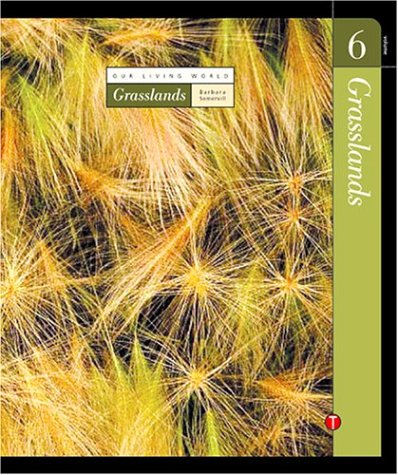

Most ebook files are in PDF format, so you can easily read them using various software such as Foxit Reader or directly on the Google Chrome browser.
Some ebook files are released by publishers in other formats such as .awz, .mobi, .epub, .fb2, etc. You may need to install specific software to read these formats on mobile/PC, such as Calibre.
Please read the tutorial at this link: https://ebookbell.com/faq
We offer FREE conversion to the popular formats you request; however, this may take some time. Therefore, right after payment, please email us, and we will try to provide the service as quickly as possible.
For some exceptional file formats or broken links (if any), please refrain from opening any disputes. Instead, email us first, and we will try to assist within a maximum of 6 hours.
EbookBell Team

5.0
98 reviews
ISBN 10: 159187050X
ISBN 13: 9781591870500
Author: Barbara A Somervill
Chapter 1: Defining the Grassland Biome
Key Characteristics: Dominant Vegetation, Climate, and Geography
Temperature and Precipitation: The Climate That Shapes Grasslands
The Role of Fire: A Natural Process
Adaptations of Grasses: Survival Strategies (e.g., deep roots, growing points)
Chapter 2: Types of Grasslands
Temperate Grasslands:
Prairies (North America)
Steppes (Eurasia)
Pampas (South America)
Veld (Southern Africa)
Defining Features: Hot Summers, Cold Winters, Moderate Rainfall
Tropical Grasslands (Savannas):
African Savanna, Australian Savanna, South American Cerrado
Defining Features: Warm Temperatures Year-Round, Distinct Wet and Dry Seasons
Alpine Grasslands and Other Variations
Chapter 3: The Landscape and Its Foundations
Topography: Flat Plains, Rolling Hills, and Isolated Trees
Soil Characteristics: Rich, Fertile, and Deep Loamy Soils
The Importance of Decomposing Grass Roots
Geological Influences on Grassland Formation
Chapter 4: Plant Life (Flora) of the Grasslands
Dominant Grass Species: Tallgrasses, Shortgrasses, and Bunchgrasses
Wildflowers and Other Non-Grass Plants
Adaptations to Grazing: Regrowth from the Base
Adaptations to Drought and Fire: Resilience and Recovery
The Absence of Forests: Why Trees Don't Dominate
Chapter 5: Animal Life (Fauna) of the Grasslands
Grazers and Herbivores:
Large Mammals (e.g., Bison, Zebras, Wildebeest, Kangaroos)
Smaller Herbivores (e.g., Prairie Dogs, Ground Squirrels)
Predators and Scavengers:
Carnivores (e.g., Wolves, Lions, Cheetahs, Coyotes)
Birds of Prey
Burrowing Animals: Creating Underground Homes
Insect Life: Grasshoppers, Termites, and More
Behavioral Adaptations: Herd Living, Migration, Camouflage
Chapter 6: Grassland Ecology and Food Webs
Producers, Consumers, and Decomposers: The Flow of Energy
The Importance of Grasses as Primary Producers
Grazing Chains: The Dynamic Relationship Between Grasses and Grazers
Predator-Prey Interactions: Maintaining Balance
Nutrient Cycling in Grassland Ecosystems
Chapter 7: Human Impact and Conservation
Agriculture and Ranching: Converting Grasslands to Farmland
Urbanization and Habitat Loss
Overgrazing and Desertification: Consequences of Unsustainable Practices
Climate Change: Drought, Fires, and Shifting Biomes
Conservation Efforts: Protecting Remaining Grasslands
Restoration Projects and Sustainable Land Management
Chapter 8: Grassland Case Studies: Around the World
The North American Prairies: Bison, Prairie Dogs, and Historical Significance
The African Savanna: The Great Migration, Iconic Wildlife
The Eurasian Steppe: Nomadic Cultures and Vast Plains
The South American Pampas: Gauchos and Unique Biodiversity
Australian Grasslands: Kangaroos, Wallabies, and Unique Ecosystems
Conclusion: The Enduring Importance of Grasslands
Recap of Key Characteristics and Ecological Roles
The Future of Grasslands in a Changing World
What We Can Do to Protect These Vital Biomes
our living world
cate blanchett our living world
where to watch our living world
is our living world real footage
cast of our living world
Tags: Barbara A Somervill, Living, Biomes